Mobile App Marketing in 2024: Tools, Insights and Tips
 Gabriel Kuriata
Gabriel Kuriata
 Gabriel Kuriata
Gabriel Kuriata
The mobile dream is simple and captivating: strike gold with an app developed for little cost. Many did so in the past, inspiring even more to enter the mobile app market, which according to most recent data by Gitnux, generated revenue in the proximity of $950 billion in 2023.
With apparently a decent app having a budget of $10 000 not being science-fiction (at least according to Valvetech, a global software development firm and multiple others) the mobile dream seems closer than any other, but…
…somehow only 0.5% of apps are successful.
This means that only a fraction of them generate any profits. But wait, there’s more! About 70% of apps have fewer than 1000 downloads (according to data released by Fyresite). Sensor Tower adds last touches to this picture with this bit of data: the very top 1% of app publishers drive around 80% of all downloads.
Why? Because successful publishers embrace viral miracles when they happen, but don’t actually count on them. Behind any app that is successful there’s a mobile marketing strategy: an efficient growth engine, fueled by hard work, analytics & optimization.
As you can probably expect, the odds of a miracle happening (your app going viral) are pretty low. There are over 1.6 million apps on the App Store and 3.5 million on Google Play, with at the very least tens of thousands new ones added each month.
The mobile app market is a crowded place, but remember this: don’t be misled by global figures and averages and discouraged from trying to take a bite. Global figures are distorted heavily by the top 1% of apps with billions in revenue (TikTok and Tinder for example) on one hand and a legion of apps not committed to any marketing strategy on the other.
You can make money on your mobile app. You just need a plan. This article will provide an easy to read, comprehensive and a practical overview of all its crucial components, so you can create your own mobile marketing strategy.
A user’s journey from learning your app exists to generating revenue for you is not straight and short and an app download is in the middle of it. Let’s look at the example of Apple Ads, on average a highly converting advertising channel for the App Store, renowned for driving very valuable traffic.
Apple Ads is an advertising platform for the App Store. The officially published average conversion rate for this channel is 60%. Our own data shows that optimized campaigns can achieve CVR as high as 80% in some cases.A significant amount of traffic (relative to their volume in the overall keyword pool) in Apple Ads is generated with branded keywords. It’s evidence of the high intent of people exploring the App Store.This intent must be born somewhere. Either with the help of other channels (social media are popular among publishers) or multi-placement campaigns on the App Store.Even if a certain marketing channel or ad placement has less stellar conversion rates or KPIs related directly to downloads, don’t underestimate the positive “halo effect” of impressions generated with them on your overall performance.
All stages of a user’s journey are important and contribute to your KPIs, even if their results aren’t visible right away.
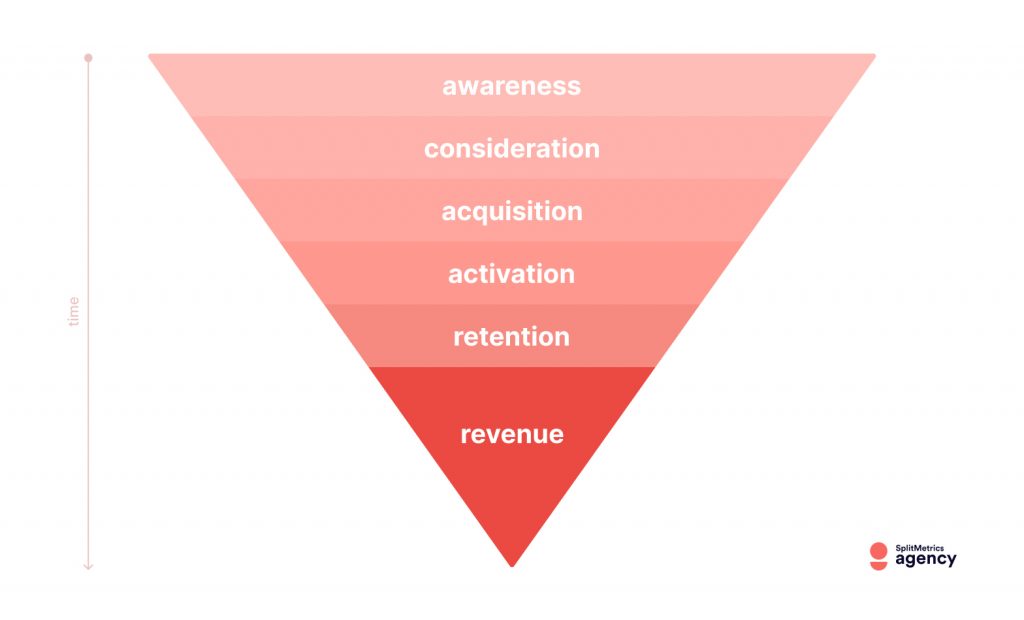
Awareness drives branded search queries and impacts the conversion rate of your app’s product page. To boost awareness, you need to reach out to the widest possible target audience. App lists and editorials on both the App Store and Google Play, PR releases, a good website… All these and many more tools will help you do that.
Consideration phase helps users evaluate your app’s offering. What it does and what needs it caters too. All efforts that influence engagement on your app’s product page help users connect with your app. Careful A/B testing of all visuals, copy and, video previews are absolutely essential here.
Acquisition stage is crucial, because it means optimizing your campaigns for users downloading your app. Your ongoing awareness building activities have a big impact on the performance of your user acquisition campaigns.
Activation means that users perform revenue generating activities inside your app after downloading it. This means in-app purchases, subscriptions or viewing in-app advertising. Largely decided within the app, through clever design, in-app events, push notifications, email campaigns and so on.
Retention means keeping your user engaged with the app to maximize their LTV –- lifetime value. Remind them of your app with in-app events and updates.
Mobile app marketing activities begin before you even launch your app.
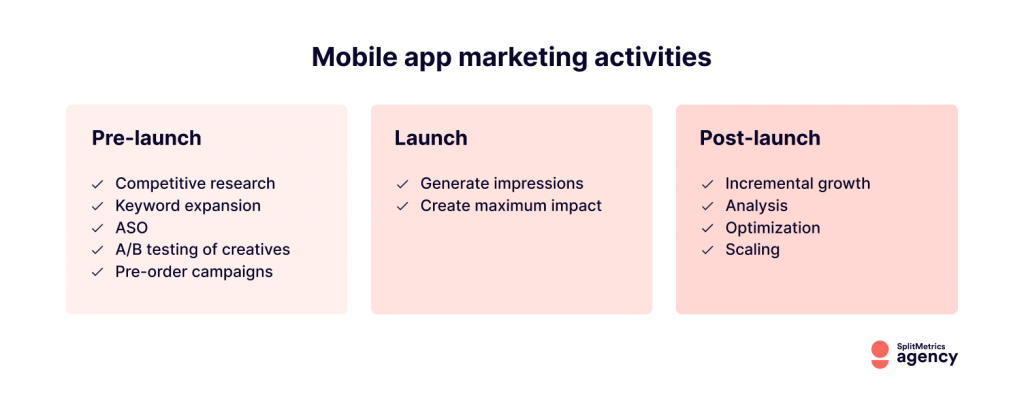
Pre-launch marketing activities revolve around setting the foundation for future campaigns. They include competitive research, app store optimization, keyword research and expansion, A/B testing product page creatives and so on. You can launch advertising campaigns for early access (for example, Pre-Order campaigns in Apple Ads).
Launch is a decisive period, as it can be used to create necessary momentum. Conducted properly and aligned with pre-launch activities, it can help you achieve the snowball effect, as downloads and engagement are a factor of organic rankings and relevance score used to display your ads (like in Apple Ads).
How to Streamline ASO Efforts with Apple Ads Pre-Order Campaigns? Find out by reading the case study of Livintis.
Post-launch activities include maintaining that launch momentum for as long as it’s profitable. Their goal is to ensure that your app grows at a sustainable pace. At this point, following a launch, you should have aggregated data to make necessary adjustments and optimizations. This is the time for scaling, international expansion or simply switching to maintenance mode in order to focus on other projects.
First steps are usually the most difficult ones, as developers try to figure out which channel to pick for start and where to eventually scale later. There are plenty of mobile marketing platforms and tools which can help you operate customer involvement and monetization. Regardless of which ones you’ll end up using, you’ll be best off by sticking to these five principles:
All roads lead to Rome and all marketing channels lead to your app’s product page. This is where virtually all downloads happen. ASO is a key factor determining your organic visibility on any app store. It’s crucial in determining your conversion rate, as it’s concerned with providing compelling content, reflecting your apps functionality and value. Work put into ASO pays off in every single advertising campaign that you run.
A/B testing is a crucial part of pre-launch mobile app marketing activities, but remains significant post-launch due to seasonality and fluctuating performance of each channel. It’s a key to minimizing the probability of a failed launch, an occurrence that can hinder all your future app marketing efforts. Remember, the bigger the scale, the harder a failure will hit.

It’s possible to test all product page creatives before the app even hits the App Store. Our A/B testing platform SplitMetrics Optimize offers this functionality.
In the world of mobile app marketing, incrementality is the concept of measuring the incremental or additional impact of a marketing activity. Incrementality analysis is pivotal in mobile app marketing as it enables precise measurement of the true impact of advertising efforts. By focusing on the additional value a specific campaign provides, marketers can accurately calculate return on investment (ROI), optimizing ad spend more effectively. This analysis ensures that marketing efforts primarily attract new ones rather than those who would have come through other channels. Ultimately, incrementality provides transparent attribution, allowing marketers to demonstrate the true value of their efforts, make data-driven decisions, and showcase the broader impact of mobile app marketing activities within the organization.
The mobile app marketing market is alive, shaped by all its participants: you, your competition and users. Competitive research should be the foundation of your mobile app marketing strategy. You also shouldn’t lose sight of what your competitors are doing post-launch too. Activity of your competitors is the reason behind fluctuations in average costs per tap and download.
Monitor your competitors to spot new trends and opportunities. New custom product pages, keyword expansion – all these can be signals that they spotted an opportunity you missed. Don’t be afraid to go for it.
SplitMetrics Unveils New Tool to Monitor Competitors’ Custom Product Pages. Read more about CPP Intelligence
Revolutionize Your Competitor Analysis with Keyword Gap in SplitMetrics Acquire. Read more about Keyword Gap
In today’s noisy world, only thoughtful, creative and relevant ads stand a chance of triggering any interaction from users. This means tailoring your content carefully to suit their preferences, showcasing different app features with custom product pages, following events important to users and choosing where to advertise carefully.
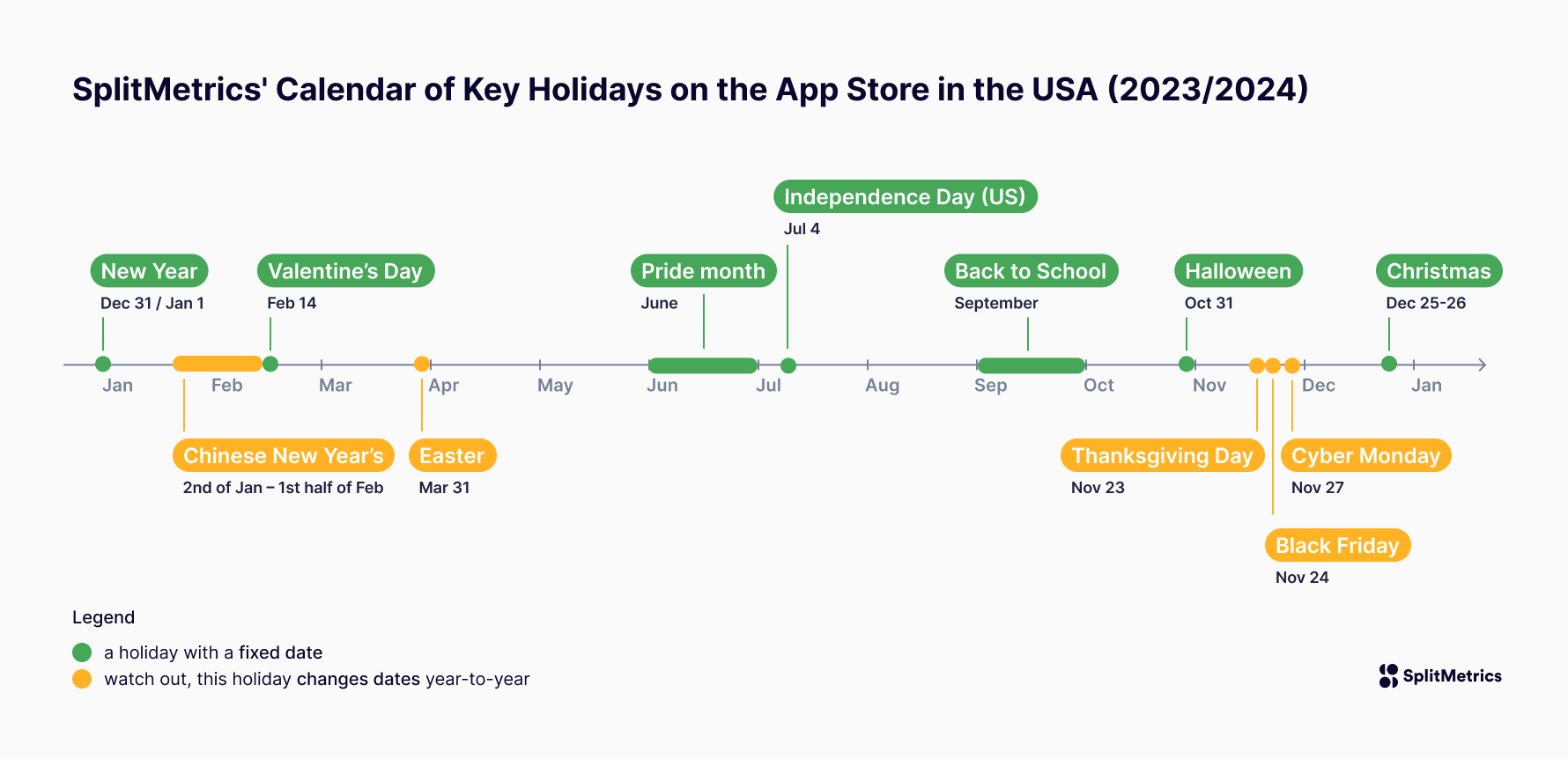
We have the foundations: phases, stages and always applicable best practices, so it’s time to take a more granular approach to other components that build a mobile app marketing strategy. Read on to learn more about:
Building the best product is only the first part, you need to have an App Marketing plan of action, and strategies for each channel you will activate. This is crucial for the success of your app
Organic traffic is a key contributor to your app growth, but only paid channels can provide an impactful impression volume for awareness and drive predictable, stable, incremental growth. Our top 6 paid channels for mobile app marketing include:
Apple Ads is an ad management platform for the App Store, an absolute must have if you wish to make money there. Remember, despite hosting fewer apps than Google Play, the App Store drives more than a half of global app revenue.
Apple Ads offers four ad placements to connect with users throughout their journey: the Today tab, Search tab, search results and product pages.
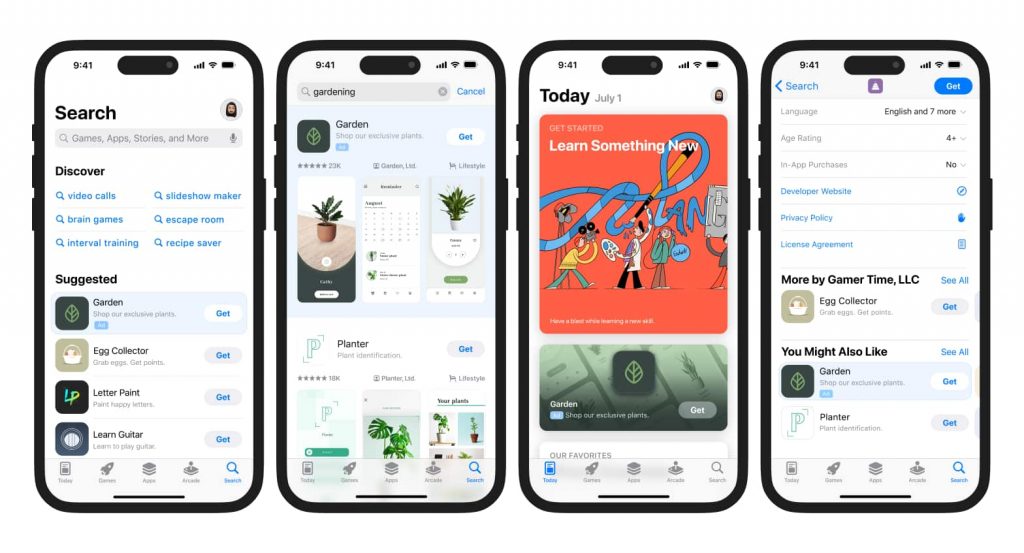
Apple Ads highlights: search campaigns enjoy outstanding conversion rates, as the audience on the App Store is highly motivated and engaged. Product page ads allow marketers to reach out to users engaged in browsing apps, redirecting them from competitors to their own app.
Additionally, Apple Ads offers the opportunity for building awareness, as the front page of the App Store greets more than half a billion visitors every week and 70% of them use Search to discover new apps. This makes the Today tab and Search tab excellent placements for creating a lasting impression, contributing well to all your user acquisition campaigns on the App Store.
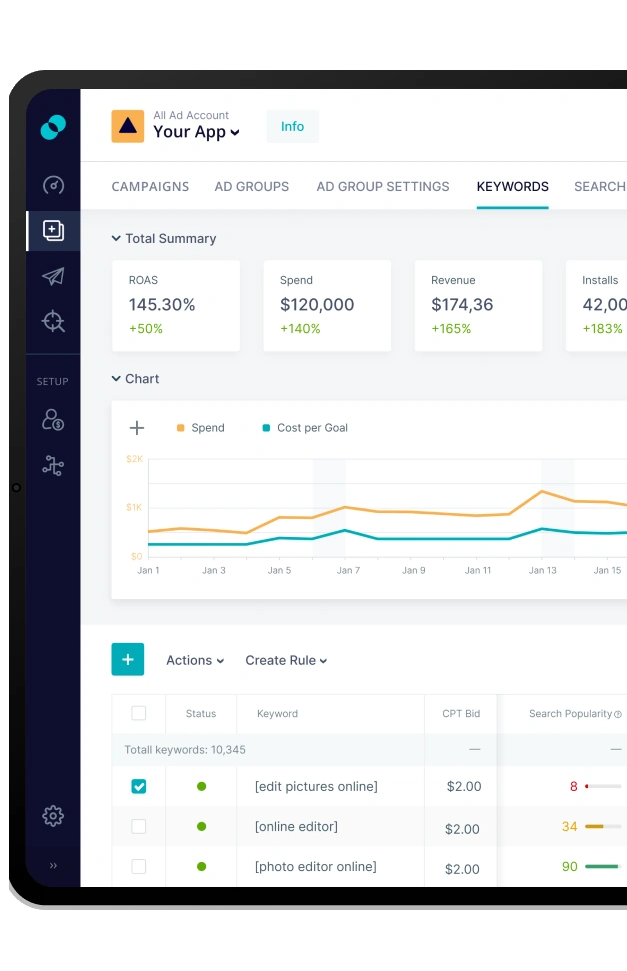
Mobile advertising servers and supply side platforms include many services, the most notable being AdMob by Google. There are more to choose from however:
Mobile advertising servers are platforms that manage and deliver mobile advertisements to users. They handle tasks such as ad serving, targeting, tracking, and reporting, ensuring that ads are displayed effectively across mobile devices and apps. Mobile Advertising Servers primarily serve publishers and ad networks, optimizing the delivery of ads to users. They ensure that ads are displayed in the right context and to the right users on mobile apps and websites.
Demand Side Platforms (DSPs) are software platforms that enable advertisers and agencies to purchase and manage digital advertising space programmatically. In the context of mobile advertising, DSPs allow advertisers to bid on and purchase ad impressions across a wide range of websites and apps in real-time. Advertisers use DSPs to automate the buying process, optimize ad targeting, and manage their advertising campaigns efficiently.
Both mobile advertising servers and demand side platforms can provide you, as a developer, a great reach to your target audience. Main benefits include transparency, time-saving and advanced efficiency of the advertising process within your mobile marketing strategy.
Mobile affiliate networks act as an intermediary for mobile app developers and performance-based advertising platforms. They include services such as:
Generally, there are three main mobile affiliation players:
The key benefit to using mobile affiliate networks is that they’re cost effective by functioning in the cost-per-action (CPA) model. Media buyers are rewarded in case of mobile app installs or other in-app events.
Mobile app advertising platforms are platforms or networks that specialize in promotion of mobile apps with the primary goal of driving installations or driving meaningful actions within your app (that may be directly driving revenue). They include services such as:
These platforms offer a variety of ad formats specifically designed to encourage users to download and install mobile apps. Common formats include display ads, interstitial ads, video ads, and native ads. Mobile App Install Platforms provide sophisticated targeting options to reach specific audiences based on demographics, interests, behaviors, and device types. This ensures that ads are shown to users who are more likely to be interested in the app. Advertisers often pay on a cost-per-install (CPI) basis and are offered real-time data & optimization.
The abundance of services and channels makes the life of a marketer in search for an audience easier, there is no denying that. On the other hand, it’s easy to find yourself in a tangle trying to figure out how to advertise apps in the best possible way.
Mobile ad servers: best for app developers who want control over ad placements, efficient ad delivery, and the ability to manage and optimize ad inventory. Useful for in-app advertising strategies and mediation with multiple ad networks.
Demand side platforms (DSP): ideal for app developers looking for programmatic buying, real-time bidding, and advanced targeting capabilities. Suitable for those wanting to bid on ad impressions across various platforms and optimize campaigns.
Mobile affiliate networks: beneficial for app developers focusing on performance-based marketing, cost-effectiveness, and a pay-per-install model. Great for partnerships with affiliates to drive app installations and achieve a positive ROI.
Mobile app advertising platforms: tailored for app developers seeking specialized platforms for promoting app installations & revenue generating actions. Provides various ad formats, targeting options, attribution tracking, and cost models based on the number of installations. Efficient for user acquisition strategies.
Apple Ads and Social media advertising are always the first steps, and the easiest ways to get your hands dirty on your first campaigns. Give yourself a test budget, follow best practices, track your results and you’ll get your first learnings
Always make sure that a robust tracking system is in place, especially for iOS campaigns. We’d always recommend using an MMP (mobile measurement partner) to have one single source of truth for all your campaigns.
For a successful mobile advertising campaign, you need to understand your audience’s demographic profiles, interests, and behaviors to select the best channels. A user on TikTok will likely not have the same needs as someone on Reddit.
Catchy image or video is the most important attention grabber once your advertising campaign is live. There are three mobile marketing pillars of a smashing image: eye appeal, relevance, and high quality. It’s also preferable to diversify in-app ads layout for different apps, and apply hacks that work for a specific category.
Excellent text is another mobile advertising success core ingredient. Highlight the features your users love the most, use capitals in moderation and don’t forget about the call to action.
There are several types of in-app advertisements developers can use:

Interstitials are in-app ads covering the entire device screen, providing more space for a broader message. It draws attention thanks to interactive media content and highly proficient visuals, videos, store locators, etc. All these results in impressive in-app ads conversion and impressions rate. There is a drawback though, this in-app advertising format is slightly intrusive.

Reward ads are triggered by a user, in exchange for some benefit inside the app. Like interstitials, these cover the entire screen. Usually these use video or are interactive. Due to their nature they can be very effective.
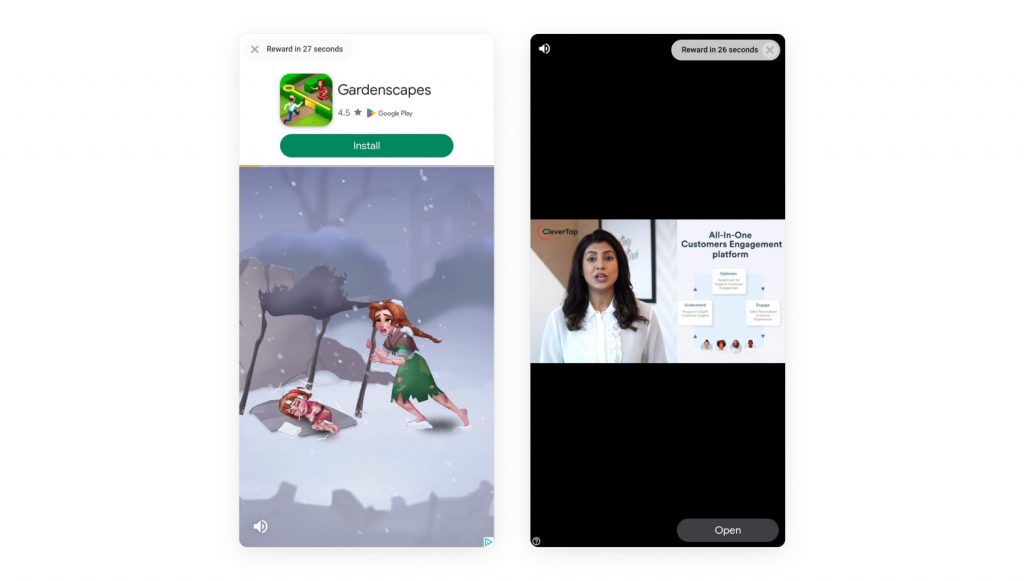
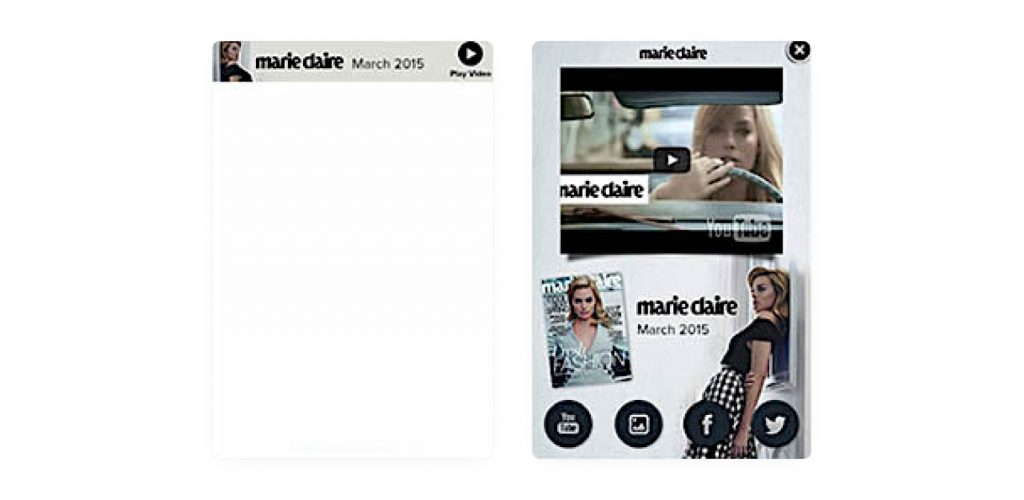
Video ads are one of the most popular and effective formats. It’s entertaining and highly engaging. Conversely, the production cost of this in-app advertising is high and some users find it distracting when a video is placed incongruously. Interactive ads provide an even higher level of engagement.
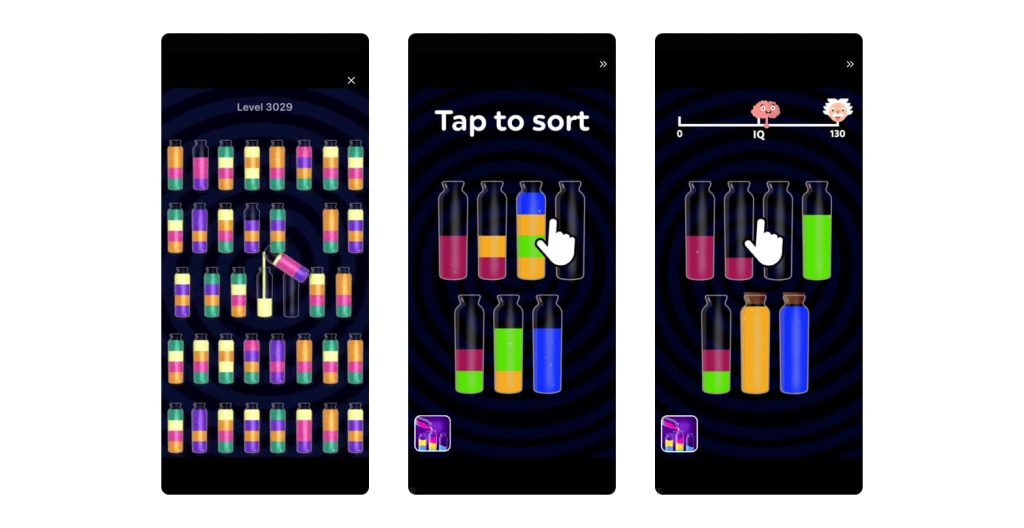
These ads can take any form or size. They’re integrated into an app and most customers treat it as a part of usage flow. This seamless user experience results in better ad engagement and click-through growth. Nevertheless, in-app ads adaptation takes a lot of work and consideration due to loads of possible options.
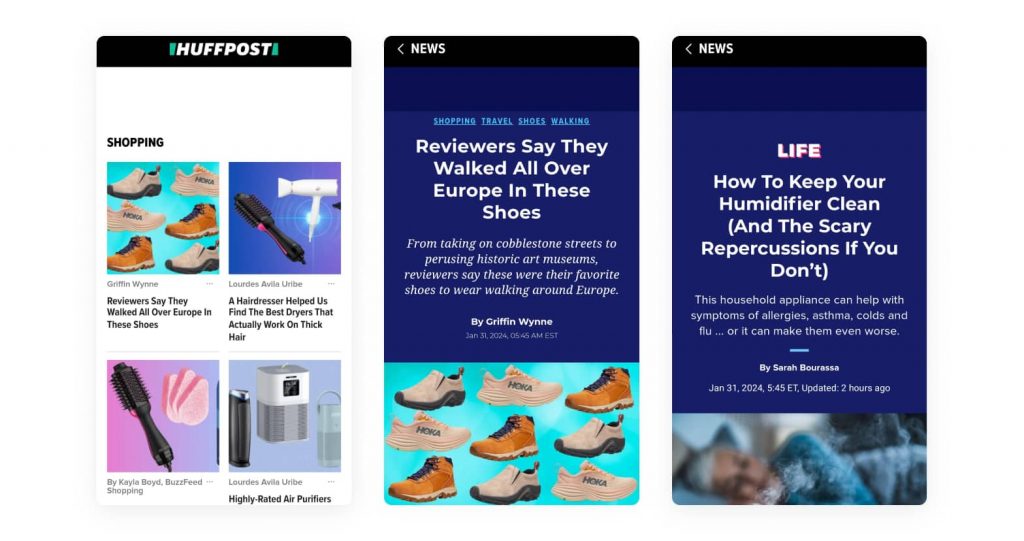
Choosing the right in-app ads partners is the first thing publishers should take care of once they’ve decided to advertise in mobile apps. Consider these factors:
Another secret behind in-app ads is geo-targeting which predetermines core audience reach. Data access and its applicability across the ecosystem is another key to in-app ads productivity besides enhanced location insights.
Remember, users become jaded with thoughtless in-app advertising. Don’t forget about the importance of in-app ads relevance to secure from annoyance and interest loss.
In our best practices we mentioned that being relevant is very important to engaging users, as well as keeping an eye on the calendar. How do these principles work in practice? Let’s take a look at these examples:
Use custom product pages to appeal to different types of fitness enthusiasts – those preferring achievements and record-breaking and those seeking self-improvement in a more casual way.
How to use custom product pages to highlight various features of your app? Read the case of tonestro to find out!
Before enabling any campaign or investing any money, be sure that you’re tracking the main milestones within your game. Once your tracking is ready, focus on creating engaging and dynamic video ads, capturing the main strengths of your game. You can use a content creator who ideally matches your user persona to embody your explanation (known as UGC ads).
All your mobile app marketing activities should be data-driven. The journey of your users from an impression to actually generating revenue is long and each step bringing them closer to the finish line carries a risk of churn. Take a look at the funnel below:
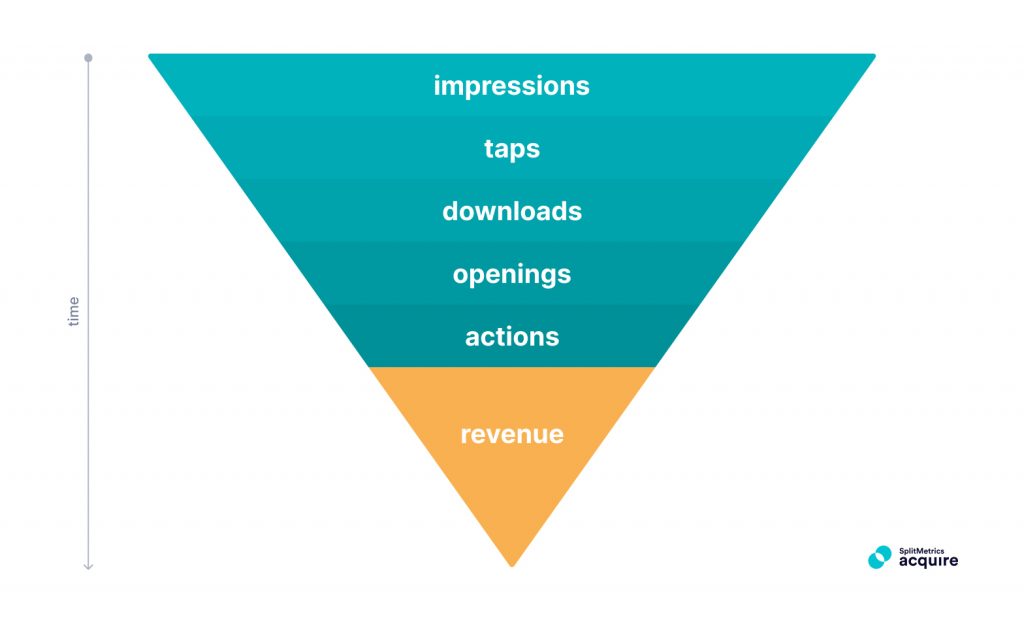
Notice that the much focused-on “Download” is in the middle of it and there are two steps before revenue starts flowing. Each of the systems, platforms and services we mentioned here provides some kind of analytics to assess the effectiveness of your advertising, but your most important goal is to connect all this data with what’s happening inside your app. For most apps, actions generate revenue, not downloads. An app can be downloaded, but not opened. Or opened and abandoned.
Cost-per-action helps identify the price of a user who is actually interested in your most valuable post-install events, thereafter, the one who generates your profit.
Analytics is an integral element of your user acquisition success, it assists in making the best use of every marketing cent you spend. To access this data, you need a mobile measurement partner. They’ll allow you to connect all your in-app purchases, subscriptions, ad-views and other revenue generating events to taps and impressions of ads.
Best Mobile Measurement Partners in 2024
Credible and properly attributed data is key to smarter decision-making on Apple Ads campaigns and a profitable scaling of your account. Mobile app marketers turn to third-party tools called mobile measurement partners (MMPs) to track, organize, and visualize metrics of ad campaign performance, including data tied to in-app activity — and understand the performance of their mobile app marketing campaigns across channels.

Implementing analytics with a mobile measurement partner shouldn’t end your quest to make your mobile app marketing truly data-driven. There are many tools and services that augment analytics and campaign management at every level.
There are solutions applicable for each step of the mobile app marketing funnel: for A/B testing, ad management, app store optimization, review management, push notifications & communication… the bigger you get, the more gears you can add to your growth engine.
Where to start though? Naturally, we’d like to recommend the SplitMetrics’ ecosystem of product and services for app growth that is created to increase efficiency by providing additional layers of functionality to Apple Ads and augmenting your ASO.
What more can we recommend? Take a look below:
Time to wrap-up, so we’d like to quickly answer some of the most frequently asked questions.
Those are user acquisition and user engagement. Simply put, you need app downloads and meaningful, revenue generating events in your app. The disparity between installs and in-app events is what drowned more than enough otherwise good mobile app marketing strategies.
Sky’s the limit ;) In general, it will cost as much as you and your competitors are willing to spend to make back the money invested in development (which can vary greatly between app categories). Steady, incremental growth can ultimately turn even a small, independent app into a well-known brand.
SplitMetrics and other companies involved in mobile app marketing are generous in publishing all kinds of data key to creating a successful app marketing strategy. This includes benchmarks, results of A/B tests, ASO trends and so on — our blog is full of them.
Most importantly, market intelligence is a key component of our app growth ecosystem, which will give you plenty of insights for data-driven decisions.
How much money are you willing to spend on acquiring a single user? This depends on how much revenue this user can generate in your app. Confront this data with benchmarks for each of the channels you plan to use for user acquisition to estimate your plan’s viability and how much you can spend.
Always updates benchmarks for Apple Ads for everyday work & budgeting. Find them on SplitMetrics’ Apple Ads Benchmark Dashboard.
Mobile app marketing automation means giving full control to ad-management, bidding and many other activities to software responsible for a given channel.
There are ways to promote your mobile apps at zero cost or negligible cost. Here are a few decent options:
Some might seem trivial, but ultimately — every little effort helps! This part pays the bigger role, the smaller your advertising budget.
Mobile app marketing evolves fast. New trends emerge, such as protection from mobile ad fraud and mobile ad blocking. The latter represents a significant problem for publishers as the rate of ad blocking users on mobile skyrocketed.
Users tend to get rid of mobile apps which abuse irrelevant in-app advertising. That’s why publishers and developers should adopt less intrusive media within their mobile marketing strategies.
Privacy protection is becoming a key concern for many advertising channels (like Apple Ads), which makes precise targeting & tracking increasingly difficult.
Programmatic advertising still runs the show. It’s crucial to identify what works for your mobile app and adapt to global trends. The field offers dozens of various adjuvant tools and platforms, publishers should choose wisely picking the ones that will supercharge their mobile marketing strategies and boost their store performance.
All in all, the mobile app marketing landscape changes dynamically, the best practices & general principles we’ve highlighted in this article continue to be relevant. Sure, the scope of what to do is vast, but stay optimistic and focus on making the best app out there! Or…
